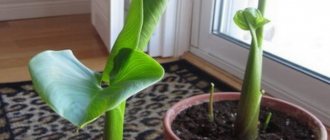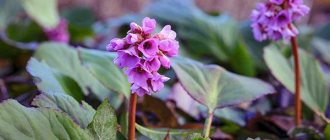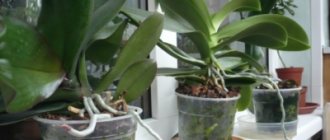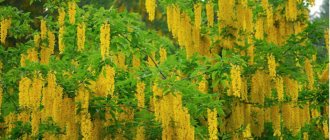Lithops are quite suitable for growing and caring for at home. Such a flower will become a source of pride; you will certainly want to show it to your acquaintances and friends. The originality of the plant inspires flower growers to create “cosmic” compositions from them. It will be a surprise when the plant “aliens” bloom.
Botanical description
Lithops are representatives of the Aizaceae family, a genus of succulents. The plant grows in South-West Africa. In the wild, it is found in desert sands and rocky valleys. The biological characteristics and appearance of the representatives of the flora are unique. They survive well in conditions where nothing else grows . For example, they have a peculiar vegetation.
The upper skin cracks in the spring, the old leaves fall off, and others appear in their place. The whole process is reminiscent of molting in a snake. Plants in different age categories are usually the same size.
There are about 85 species of these succulents in the deserts of Africa. In places where it grows, the average summer temperature is 20-27 degrees. The winter months are slightly colder - 12-15°.
The color of the plant's foliage resembles stones interspersed with limestone. This feature serves as camouflage for lithops. They are not immediately noticeable among the surrounding soil. Therefore, from Greek the plant is translated as: “litho” - stone, ops - similar . People call them “living stone”. During the dry season, the fleshy longitudinal roots of succulents pull the aboveground part underground, leaving a small part of the leaf. This is how lithops waits out an unfavorable period.
The surface layer of the leaf may have multi-colored inclusions. At the end of the summer period, flower buds appear between the leaves in an amount of 1-3 pieces. Lithops flowers look like snowflakes and stars. They live on the plant for about 2 weeks.
Varieties and photos
The plant did not attract much attention for a long time, since lithops is well hidden from the human eye and can easily be confused with an ordinary stone and passed by. Only in 1812, lithops were accidentally discovered by the British botanist Burchell.
Today science has information about 38 species of lithops . These include plants of natural origin and varieties bred by man. The most unusual specimens adorn the collections of home gardeners. Below are photos, names and descriptions of lithops varieties suitable for propagation and care at home.
Optics
The only succulent of this species that has purple and lilac leaves. The outer plates are darker in color. The height of the plant is only 2.5-3 centimeters. The flowers are almost entirely contained in the crevice, with only the tops of the white petals and pale yellow stamens visible from the outside. The photo below shows Lithops Optics:
Aucamp
This variety of Lithops is named after Juanita Aucamp. She is a biologist from South Africa. The leaf blades of the plant grow up to 4 cm wide. The succulent has a round top. The color of the leaves varies from green to brown or blue-gray. The tops of the leaves are “strewn” with colored spots. The crevice in the middle of the plant is deep. A large yellow flower grows from it, emitting a delicate aroma.
Leslie
A variety quite popular among succulent lovers. Grows well at home. This is a small plant, with two small fleshy leaf blades . Their diameter is almost 3 centimeters. Lithops Leslie comes in different colors:
- pink;
- red;
- grey;
- coffee.
The surface of the succulent has an elegant pattern resembling a star. The flowers of “living stone” are large, with a subtle, pleasant smell. Colors - white or yellow.
Marble
This type has a height of 3.5 centimeters and a width of 3 centimeters. The upper layer of the leaf blade is greenish-gray, grayish-white, with dark veins. Reminds me of marble in appearance. The leaves give the impression of being velvety, but when touched they are completely smooth. The succulent blooms with a white flower with a yellowish center. The petals are very large, up to 6 centimeters in length, with a delicate aroma. From a distance it looks like a brooch with a white chrysanthemum in the middle. You can see what the Lithops Marble variety looks like in the photo below:
Divided
Lithops of this variety has unusual plates. They are spaced widely apart. The surface is green tones, with gray splashes. The leaves have a flat surface. An adult plant reaches 3 centimeters . The Divided variety blooms in September with yellow inflorescences.
Dintera
The variety is distinguished by fleshy leaves, green in color with a gray tint. The cleft is located in the middle. The surface pattern of the leaves is dark with specks and thin veins. The flowers are large, bright golden in color. In the photo below is the Lithops Dintera variety:
Varieties
About 40 species of lithops have been found in nature, but only 15 are available for cultivation at home.
Flower growers' collections consist of specimens of various shades, which are used for breeding and creating new species. It is by their colors that ordinary plant lovers distinguish them.
Types of Lithops:
- Aucamp (lithops aucampiae). The Aucamp variety has a fairly standard grayish-greenish color with furrows on the leaves. Flowers up to 4 cm, yellow.
- Leslie (lithops lesliei). The Leslie variety is distinguished by its very short leaf blades with a fine pattern reminiscent of marble. The color is gray-blue. The flowers are white and fragrant.
- Marble (lithops marmorata). A green-grayish plant with a patterned surface resembling velvet. The flowers are large – up to 5 cm.
- Leslie Marie (lithops lesliei mariae ). Brownish-yellow “pebbles” with a shallow crevice and a dark pattern.
- Optics (lithops optica). They have purple leaves and grow only up to 3 cm. They resemble blueberries.
Care
Caring for lithops at home is very easy. The plant does not require exceptional conditions. But in order for the succulent to look healthy, it is necessary to create microclimate conditions.
Lighting
For lithops to grow well in a home greenhouse, you need a 5-hour sunny day. The rest of the time the plant should be in the shade. The flowers bloom in the late afternoon when the brightness of the light decreases. Pots with live stones are best placed on southern or southeastern window sills . Some types of succulents should be kept in the shade, as the hot rays of the sun can burn the surface of the leaves.
With a lack of lighting, lithops lose weight, stretch, and leaf blades darken. This condition should not be allowed; there is a risk of plant death. It needs to be illuminated with LED lamps. They are installed above the plant 10-15 centimeters from the surface.
Temperature
During the growing season - early February and during the summer, lithops need room temperature.
It is advisable to ventilate the room frequently. When winter begins, the plant begins a period of rest . Watering is gradually reduced and then stopped completely. It is advisable to lower the air temperature to 12 degrees. Lithops spend the summer months well outside. Pots are placed in partial shade; flowers can be placed under trees. This is how the succulent hardens and produces high-quality flowering.
Humidity and watering
You need to water carefully so as not to get on the leaves, especially in the crevice. To prevent the succulent from rotting, it is raised and drainage made of crushed stone is arranged. So the lithops will sit with the upper part of the root and the lower leaves on the stones. When moistening the soil, do not use a tray, as it can “swamp” the ground. If there is an excess of moisture, midges may appear in the substrate.
It is advisable to water the succulent in accordance with the life cycle of the plant. It is necessary to increase the frequency of watering when the lobes do not open well.
Top dressing
You can apply fertilizers to lithops once per season or 2 times. Typically, amateur gardeners use purchased mineral complexes in liquid form intended for succulents. They are stirred in water and added to pre-watered soil. This is mandatory; complete wetting of the earthen clod is necessary. The concentration of the fertilizer is reduced by 2 times than what is written in the annotation for the drug . Do not unnecessarily feed the succulent only if the leaves wither or change.
In the autumn months, when the plants are resting, they do not feed.
Lithops are desert dwellers. They have phenomenal endurance. I can withstand unfavorable environmental conditions. To do this, it is necessary to support them with fertilizing.
Fertilizer application is excluded if the lithops grows without replanting in the same container for more than 2 years..
Transfer
Succulents do not need to be replanted often. Five-year-old young lithops are replanted once every 2 years. An adult plant - after 4 years. Transplantation is done in the spring, after winter awakening, at the beginning of the growing season. Lithops roots are well developed, but they take a long time to grow. Pots for replanting are purchased 1 centimeter wider than the old containers.
It is advisable to purchase ceramic products made from clay. You can simply change the soil and plant it back in the original pot. To plant, you need to take a small container for cacti. One condition is that the roots of the flower must fit well into it. Pour a layer of brick chips into an empty pot, this will serve as drainage.
Lithops cannot stand being alone. It is advisable to seat them in small groups, with small distances between them.
Remove the succulent from the container and remove old soil from the roots. Then spread them out in a clean pot and cover them in layers with fresh substrate. It is preferable to make the top of small pebbles so that the liquid does not linger at the neck of the roots .
Priming
“Living stones” require light, rocky soil.
It should allow moisture and air to pass through well. Often gardeners purchase soil intended for planting cacti. It is worth mixing river sand, a quarter of the total volume, into the purchased substrate for succulents. You can also prepare the soil for flowers yourself. Mix:
- Leaf humus.
- Clay.
- Crushed brick.
- Coarse sand.
The proportions of the components are 0.5: 0.5: 0.5:1. The soil should not contain limestone.
Are the stones alive or dead?
Good day my dears.
So are the stones alive or dead? If you ask yourself which world the stones belong to, the living or the dead, everyone will probably first say: “Of course, to the dead.” But let's think carefully. At the molecular level, a stone has a certain crystal lattice inherent to it (depending on the type of stone). What is a crystal lattice? From the school physics course we know that these are the smallest particles of matter located in space in the form of an ordered structure and interconnected by intermolecular forces. By and large, any substance - both air and liquid - consists of interacting particles. A distinctive property of a crystal is precisely the ordering of the nodes of the crystal lattice and the ability to maintain its shape due to the attraction acting between the particles that make up the lattice. But the particles themselves do not stand still. Any atom has a number of physical characteristics, among which is vibration at a certain frequency. Within a node of the crystal lattice of which it is a part, the atom vibrates. As a consequence, the entire crystal as a whole becomes a source of electromagnetic waves inherent in the very substance from which it is composed. And if we look at the crystal lattice of a mineral under a very powerful microscope, we will see the continuous movement of atoms in it, and if in even more detail, then the movement of electrons in their orbits around the nucleus; and movement means life! On the other hand, if we approach the issue philosophically, it is known that when some material object carries the qualities of energy and information, it is also considered alive. Atoms vibrating at the nodes of the crystal lattice lead to the emission of electromagnetic waves with a certain energy. And any energy inherently carries information. A crystal in the usual sense serves as the embodiment of inanimate nature. Nevertheless, we see how thin the line is between the perception of living and nonliving things in nature. The concept of a crystal does not exclude the possibility of life, and vice versa: for example, viruses under unfavorable environmental conditions are capable of organizing into crystalline microcolonies. They thus “wait out” the time until they enter an environment favorable for reproduction - the cells of a living organism. There is another parallel. Crystal and living organism. The chemical composition of the crystal and the arrangement of its atoms in space (crystal lattice) remain constant. The chemical composition in a living organism changes every second due to various physiological reactions occurring in it, not to mention the changing structure and arrangement of atoms and molecules. But, despite such variability of a living organism, it, its ancestors and its descendants retain their characteristic qualities for many years (amoebas remain amoebas, birds remain birds, humans remain humans). This means the presence of a certain constant constituent element for all living beings. Can you guess what this element is? Of course, DNA! These molecules carry information about the properties and qualities that living organisms of a given species should have. In nature, by and large, everything is interconnected and influences one another - living and inanimate, dark and light, earthly and heavenly. There is nothing superfluous. These initial connections have always been felt not only by individuals with superpowers (intuition, or extrasensory gifts), but often even by ordinary people. Remember, for example, with what nostalgia we, city dwellers, remember summer trips to nature and see in them a return to origins, unity with the natural environment! It’s also no secret that humans are perhaps one of the most unprotected animals on the planet. It has no repulsive coloring, no fangs, claws or durable shell. Man has always understood this and sought to protect himself in accessible ways, turning to the means of living and inanimate nature. And he not only tamed wild dogs to guard his home, or smelted metal and invented gunpowder to make weapons, or discovered penicillin to fight previously incurable diseases. Man sought support from minerals. And the result was the development of mineral therapy! The stone became a reliable friend and comrade of man. Despite the fact that traditionally stones seem hard to us (how could it be otherwise, otherwise we would not associate the word “stone” with reliability and strength), heavy, dense - you will be incredibly surprised at how soft they can be, tuning into the biofield of your the owner and being in resonance with him. At the same time, for the owner they will become pliable and accommodating protectors (of course, provided that you wear “your own”, suitable stone), but they will turn out to be firm and unapproachable in relation to ill-wishers and unfavorable influences. We can pass by stones indifferently, considering them inanimate. But a native stone has value not only as a museum exhibit and not only as an object of desire for jewelry lovers. This is not just an inanimate object lying on the side of the road. A mineral is something living that has exceptional properties. There is a life going on inside it, perhaps little explored until now. It manifests itself in the form of crystallization, and in the form of energetic vibrations of the crystal, and in various reactions to light, electricity and chemical reagents. The mineral actually lies on the border of living and non-living, combining organic nature and non-living matter. Therefore, if you stop and listen to the stone, treat it carefully and sensitively, you can get a significant and amazing return in return!
I hope this information was useful to you. Don’t forget to comment, I will be happy to answer all your questions.
With love Eva.
Shop: magic of stones.
Shedding
Lithops has an amazing property: it renews its leaves, like a snake changes its skin. In the first half of February, the top cover of the succulent begins to shrink , then dries out and bursts.
A pair of young leaves growing perpendicularly catches the eye. How long does it take for Lithops to molt for the first time? The molting process stops at the beginning of spring - March, April. In order for the foliage change to go well, you need to stop watering the plant completely. Next, put it in a cool but bright room for a period of rest.
You should not remove old leaves from molting lithops. New shoots take moisture and nutrients from there. Otherwise, the young leaves will not gain strength and will grow clumsy or dry out completely.
Reproduction
Lithops are grown from seeds.
They are freely sold in flower shops. You can also obtain seed material yourself from existing plants. Using a soft brush, pollen is taken from a flower and transferred to another flowering plant . Ripening occurs in about 8 months.
The seeds are microscopic, so it is better to sow them on top of the soil without covering them with soil. Growing lithops from seeds at home requires a lot of patience and care. These “living stones” take quite a long time to grow, but the result will be amazing. The succulent will reward you with beautiful flowering and a delicate aroma.
It is necessary to moisten the crops by spraying with a spray bottle. The first shoots will appear in about 8-10 days; they grow slowly. The leaf develops to maturity within 6 months from the shoot. A transplant will be required after 12 months.
Diseases and pests
Succulents of this type usually do not get sick, but are susceptible to fungal infection. The infection occurs due to abundant, frequent watering. Often, a plant that begins to rot dies. You need to take the humidification regime seriously and do not overfill it with water.
Fleshy leaves are not to the taste of harmful insects. They rarely attack flowers. In extreme cases, mealyworms settle on them. Pests live not only on the surface of the plant, but also burrow into the soil.
To destroy the worms, it is necessary to remove the lithops from the ground and completely treat it with an insecticide. Then the succulent is dried and placed in a new container with fresh substrate.
Growing difficulties
Both beginners and experienced plant growers can encounter problems when cultivating succulents. Often difficulties can arise due to improper care.
Seedlings stretch out
Succulents may begin to grow rapidly due to lack of sunlight. You should move the container with lithops to a more illuminated place, organize additional lighting with phytolamps and fluorescent lamps.
Advice! You should not use incandescent lamps when illuminating plants - they generate heat that can harm lithops.
Green coating on the surface of the earth
Green soil is evidence of algae and mold in the soil . The problem often appears with a poorly equipped drainage system and excessive watering.
The succulent requires replanting in clean soil; it is important to monitor the intensity of soil moisture.
Rot
A characteristic sign of rot is watery brown spots on the surface of the leaves, loss of elasticity, and peeling of the skin. Affected lithops also have a diseased appearance in cross-section.
There is a distinction between wet and dry rot . The first variety is accompanied by a sharp, unpleasant smell of decomposition. Unfortunately, it is impossible to prevent or stop the process of leaf rotting.
To save the plant, you need to cut off the damaged parts with a sharp knife and transplant the succulent into a new pot . The old container should be thrown away or sterilized with boiling water before further use.
Disorders in care
Errors during cultivation can also cause the death of the plant. It is important to carefully monitor soil moisture, avoid drafts, and protect young plants from the scorching sun.











